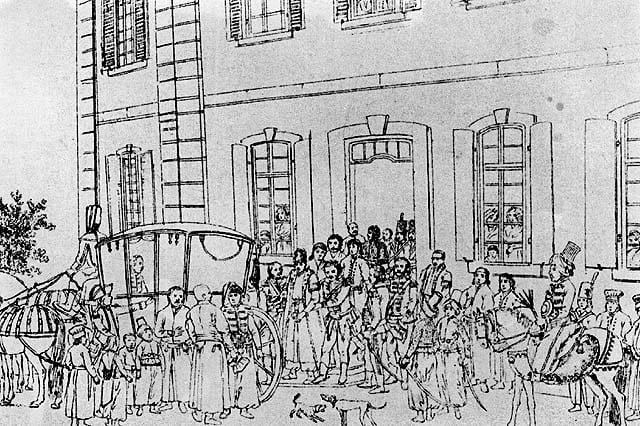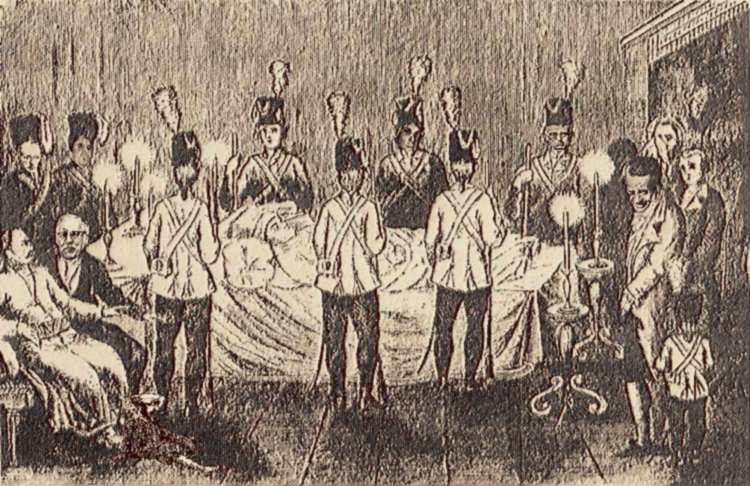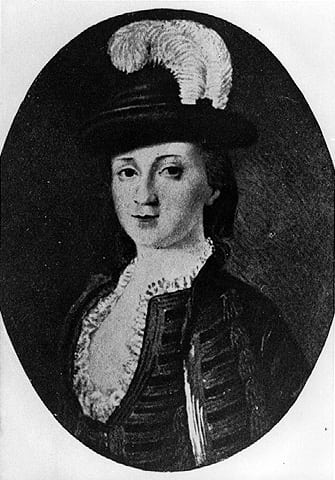Surely, some concepts delivered by Judaism hit Jews back like a boomerang: God; the atom bomb; summer vacation, to name just a few, and also, the sociological concept of the excommunication. Such sanctions weren’t invented by the BDS movement, who simply adopted an old Jewish concept and used it against the Jews.
The origin of the excommunication practice dates back to the middle ages, even to biblical times. It was mostly in use during the bitter war between the Hasidim and its opposers since the 18th century until the 19th century. That period saw a cruel conflict that’s been splitting the Jewish society for a whole century. Bans were published on renting houses, hiring or even talking to someone who was suspected to support Hasidim. The Gaon of Vilna, one of the greatest Jewish spiritual leaders ever, did not hesitate to incite against Hasidim, and to encourage violent acts against them such as burning their books.

Reading through the works of Prof. Gershom Scholem, the famous expert of Jewish Mysticism, we learn that the Hasidim did not just appear, but rather had a spiritual background of a former important large movement called the Sabbateans. Here is the story of a special ban called “double edge sword”. The ban was declared against 2,000 Jews in the city of Lvov in 1759, who were accused of belonging to the Frankist cult, an extreme sect of the Sabbateans.
The main concept in Sabbatean theology was relying on the concept that after Shabtai Zvi entered the Jewish arena, the messianic era has started. In this new world, everything was turned upside down: the old law was cancelled, all the “do not” laws became “do” laws, even strong prohibitions such as Incest. The Sabbatean used to bless each other with this (twisted) verse: “Blessed art thou, Lord, who cancels and allows the prohibitions.”
The story of the Frankist sect started with the founder and leader, Jacob Frank. Born in Podolia in 1726 to a wealthy family from the inner circle of the Sabbatean, when he was 12 years old he joined his father on a business journey to Thessaloniki. It is assumed that he was introduced to Sabbatean circles in Thessaloniki and was deeply affected by this encounter. Upon his return to Poland in 1755 he started to develop a severe megalomania, deeply convinced that he was the true successor of Shabtai Zvi.

Back in Poland he gathered a sect of believers, who were drawn by his charismatic personality, and announced him the heir of Shabtai Zvi. But he would not settle for that, and wished to form a new, improved, high intensity Sabbatean theology, based mainly on a gallery of mystical radical symbols that were about nothing but destruction and nihilism.
Frank addressed his followers: “I came not to elevate your spirits, but to humiliate you to the bottom of the abyss, where you can get no lower, and where no man can rise from by his own forces, but only God can pull him with his mighty hand from the depth.” By “abyss” he meant particularly sexual rituals that included sacred orgies with just a touch of incest. The sexual adventures reached the ears of the senior rabbis of Poland, after the Frankists held a rough sexual ceremony described by David Kahana in his “Book of Darkness”: on the 26th day of the month of Shvat in 1756, on a market day in the town of Lanzkron, Podolia, the people of the Frank sect gathered in the morning in an inn of one of their own, closed all the windows in secrecy, and took the rabbi’s wife, a beautiful and promiscuous woman, sat her down naked in a palanquin, placed a Torah crown upon her head and danced around her, playing instruments, falling on her and kissing her, while calling her “mezuzah”.
During the 18th century, other small Sabbatean groups were founded by the dozens and hundreds, and some entire communities turned Sabbatean. In order to defeat this threat, the rabbinical authorities declared a war against the Sabbateans, using whatever they could, including their strongest weapon – excommunication.

The main character behind the great excommunication in Lvov was rabbi Jacob Emden (Ya’avetz) who condemned and hated the Sabbateans and the likes – the most. Ya’avetz , whose three daughters were married to important rabbis who served in the Council of Four Lands (the highest leadership of the Jewry of Poland), convinced his sons in law to excommunicate a large group of 2,000 Jews whom he claimed were Frankists, though he did not know them, never met with them and could not even be certain that they were indeed members of the sect.
The ban declared that “we shall not rent a house to or from them; we shall not buy from them or sell to them; we shall not teach their children, nor bury them nor circumcise them”. In those days, excommunicated Jews were like fish outside the water: doomed to a slow agonizing death. Fearing starvation and freezing, the 2,000 Jews turned to the church seeking for help. The church agreed to give them a warm welcome, if they declare that the Talmud is full of lies and nonsense, and that the blood libels were true, and finally, that they convert to Christianity.

Thus, 2,000 Jews forcibly converted and had to declare that their fellow Jews indeed used the blood of Christian children in order to make Matzot. One of the heads of the Frankists, rabbi Elisha Schor, of the famous Schors of Rohatin, bitterly said to rabbi Chaim Rapoport of the Lvov rabbinate: “Chaim, this is blood for blood. You allowed them to shed our blood, and we accuse you of using their blood”. Even the Baal Shem Tov sided with the Frankists and accused the rabbis for fabricating lies and legends.
Jacob Frank himself converted to Christianity in a festive ceremony in Warsaw, at the presence of the King of Poland. He then lived gloriously in his mansion until his death in 1790, succeeded by his daughter, Eva. Just like the excommunication practice, that still stands today, his ideology survived and went through a metamorphosis, then introduced again with the Sabbatean sect of the Donme, which is still active today in Turkey – the same place where the original Sabbatean movement was formed.